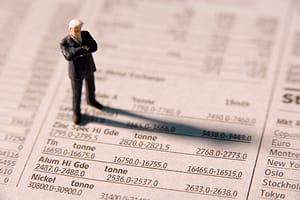In a bid to shake up business rates, the UK government has announced a lowering of the threshold for breweries regarding tax breaks on the beer they produce. Small Breweries’ relief was brought into effect back in 2002, which was intended to give a 50% discount on beer duty to those producing less than 5,000 hectolitres per year.
The planned changes have come under fire, as they’re accused of helping large breweries at the expense of start-ups. After the changes are put into effect, over 150 breweries producing between 2,100 hectolitres and 5,000hl annually will see their costs rise.
“This is a big blow to the industry and will see breweries go under and job losses occur,” says the North Brewing co-founder Christian Townsley.
This comes at a time where breweries and microbreweries have been hit with lockdown measures that have stifled sales in pubs and restaurants. For months now, people have turned to hosting home barbecues in their garden instead of drinking out at an establishment.
There are of course some mid-sized breweries who will benefit. Small Brewers Duty Relief Coalition are a group of such breweries who were backing the reform, and claim these changes will be an important step in “saving the British pint as we know it”.
Only, the British pint has already been and gone. Many around the country have felt that the pub isn’t what it used to be, and prefer drinking at home now instead. This has been a trend long before lockdown came into effect.
The rising cost of the British pint
The average cost of a pint in London in 2019 was £4.57. Whereas in 1997, a pint of draught bitter was £1.63 and a draught lager was £1.81. If we go back to 1987, almost no pint was above a pound.
Rising taxation around alcohol has been a large part of this, as we can see from above. But it seems to be more than a tax reason — it all started with the smoking ban in 2007. On July 1st, 2007, smokers were prohibited from smoking inside. Instead, they would have to go outside into a designated area to exercise their tobacco habit.
From 2007, pubs started to see a rapid decline in numbers. Well over 55,000 were operating in 2007, which dropped to 50,000 in 2015. Bear in mind this is resistant to a rise in population, too. Thankfully, the number of smokers also declined heavily since then too, so this isn’t an ideological argument.
In the past 10 years, rent, brewery costs and taxation have all seen costs rise. Factoring in the inconvenience of smoking, we haven’t seen a better representation of highstreets gentrifying than with pubs.
The rising prices have slowly stopped regular drinkers from drinking out. This is partly because they’re drinking less, but it’s also because alcohol sales in shops have risen, as well as online booze delivery like Naked Wines. This has led to a dramatic shift in the British pub.
The demand for craft beer has risen dramatically with its own developments. Craft beer has become fashionable, and it’s here to stay. IPA sales have skyrocketed, and the amount of microbreweries have exploded too.
So it’s not necessarily true to say nobody wants to drink out anymore. Instead, we’ve seen a shift in class culture, from the working mans’ pub to middle class microbreweries. And, of course, with the government working against such microbreweries, the price discrepancy between the two stereotypical establishments is huge.
You can’t blame people for changing tastes, of course. Supply and demand are forces of nature that don’t have to be argued with. We should be looking to the government as to why the low-cost traditional pubs are dropping like flies and the working class are being displaced.
Measures to keep the British pub alive
First and foremost, taxes are the most direct way low-cost establishments are hurt. Operating on fine margins is made even more difficult when you have to hand over a huge chunk of that margin.
Another way may be for microbreweries to offer low-cost options, which many do not. It seems that the only establishments that can afford their rent are the ones selling craft beer. This is great for them, but having low-cost options could help attract new demographics and increase their foot traffic.
Another way for pubs to generate second revenue streams may be to have day-time operations, such as doubling as a parcel collection place, or a library, in the same way that book stores have integrated cafes.
Many countries ban alcohol sales in shops after a certain time, such as 10pm. Not only could this help tackle our issue with rising alcohol sales in shops, but it could help keep the British pub alive by enticing people in.
It seems the underlying issue here is that, with rising rents and lockdown measures for the foreseeable future, the free market alone may not be able to save the British pub.






Leave a Comment